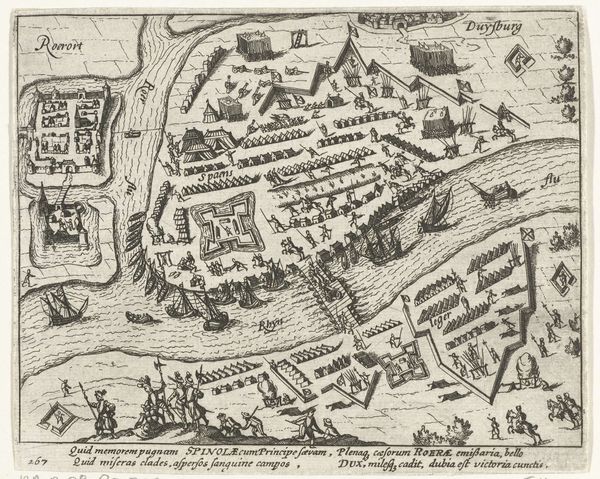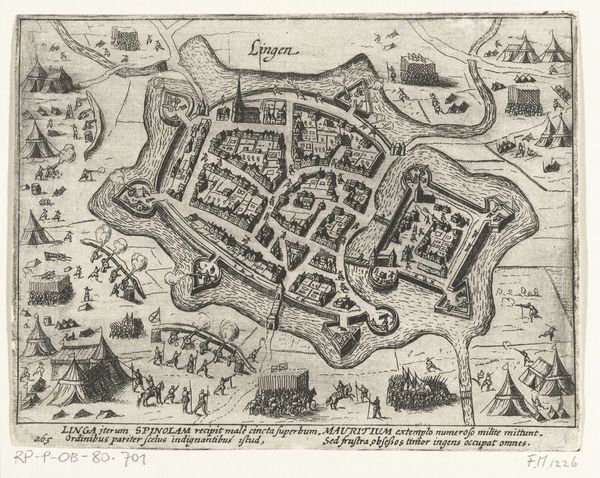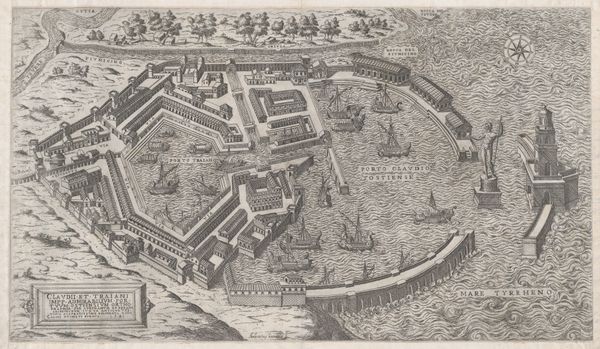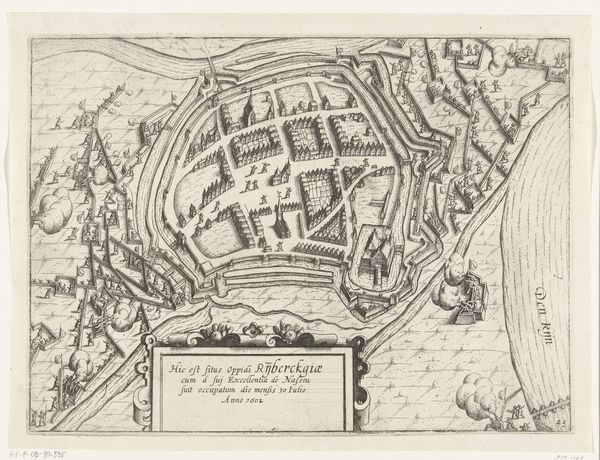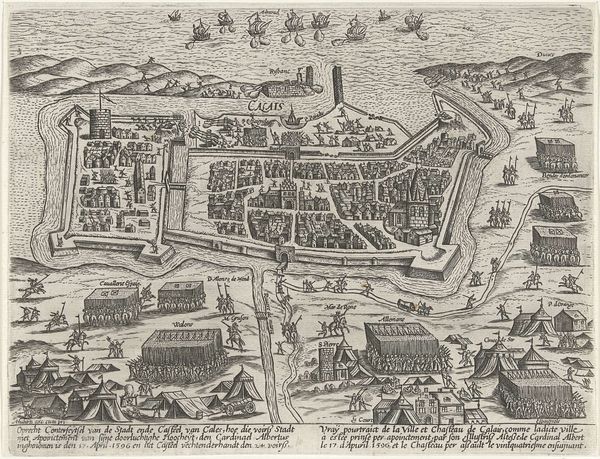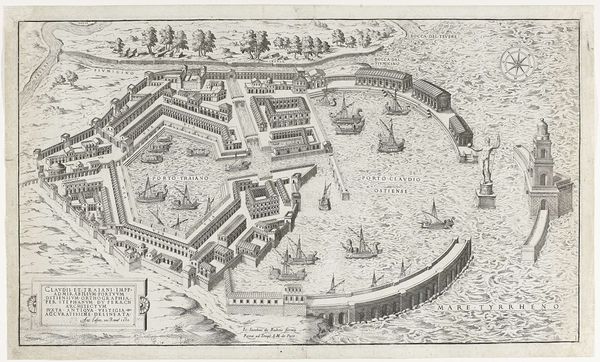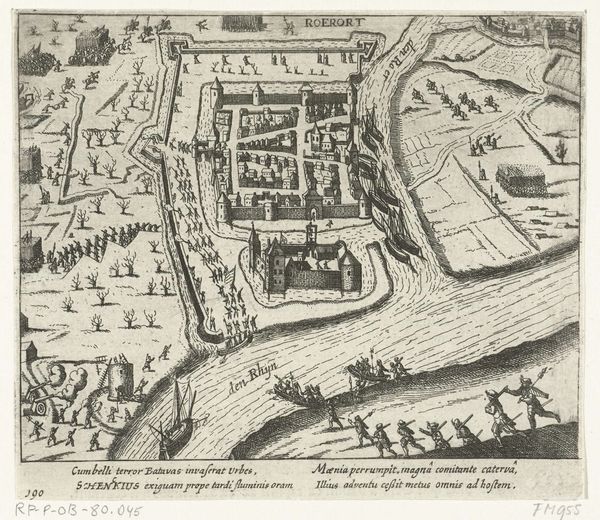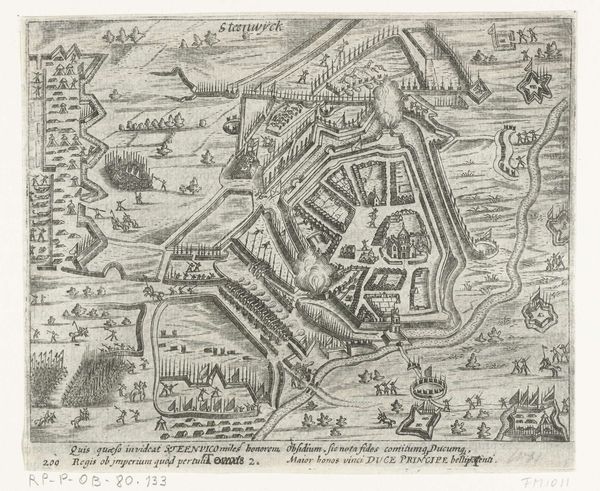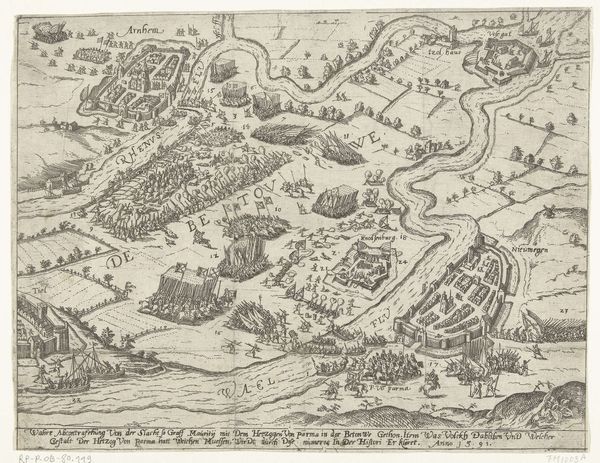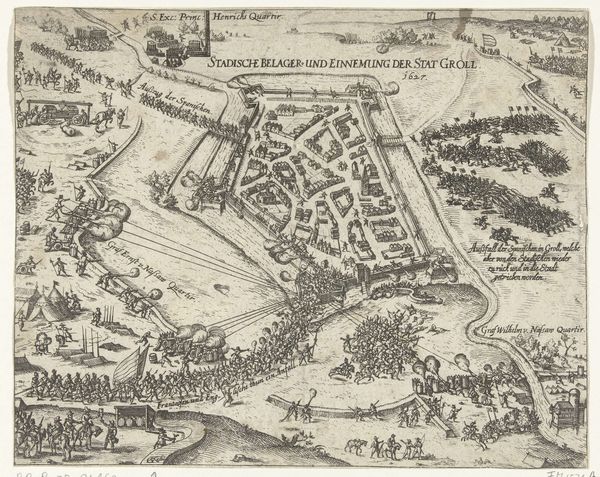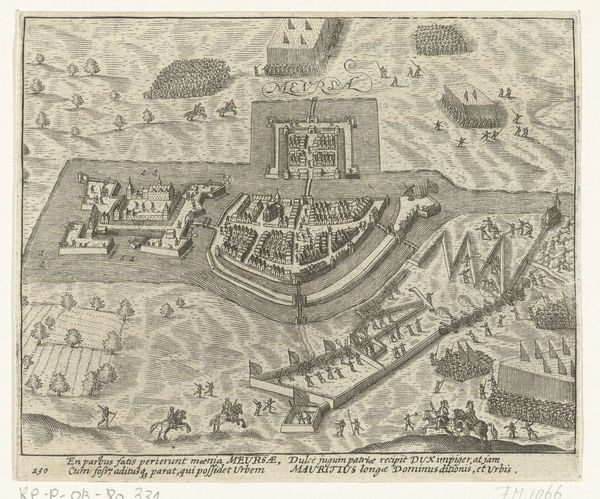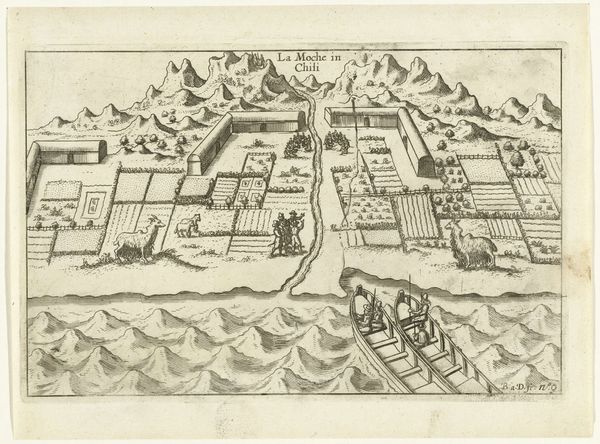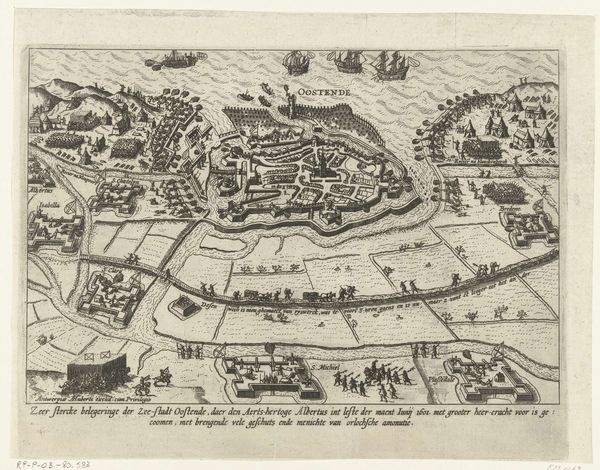
drawing, print, ink, engraving
#
drawing
#
baroque
# print
#
ink
#
geometric
#
cityscape
#
history-painting
#
engraving
Dimensions: height 136 mm, width 165 mm
Copyright: Rijks Museum: Open Domain
Editor: Here we have an engraving called "Ontzet van Bredevoort, 1606," made between 1613 and 1615. The print offers what looks like an aerial view of a besieged town. It’s fascinating, almost like looking at a game board. What stands out to you about this piece? Curator: The strategic overview is certainly compelling, isn't it? It’s important to remember that these prints served a crucial function beyond mere aesthetics. This isn't just a cityscape; it's a carefully constructed piece of political propaganda. Consider the context: the Dutch Republic was fighting for independence from Spain. Prints like these shaped public opinion. What details draw your eye in relation to this socio-political backdrop? Editor: I notice the large cloud of smoke and explosion near the city wall and wonder about the intended symbolism, it is located between the warring sides after all! Was there really a strategic victory happening, or did the artist want people to see the Dutch as triumphant regardless? Curator: Precisely. It emphasizes the power and disruptive strength in military campaigns, with Bredevoort depicted under attack. This image attempts to sway public sentiment and solidify support for the Dutch cause. Editor: So, this isn’t just about depicting reality but shaping it. It highlights the cultural importance of printed imagery in a time of war. It also leads me to believe art like this should be looked at through a historical lens. Curator: Absolutely! The ‘truth’ conveyed is less important than its effectiveness as propaganda and the solidification of national identity. It invites us to investigate power dynamics that can permeate artistic and public life even today. Editor: I learned to always consider what someone wanted me to think when I viewed their work of art. Thanks. Curator: Exactly. It challenges us to consider what motivates the creation and display of images.
Comments
No comments
Be the first to comment and join the conversation on the ultimate creative platform.
